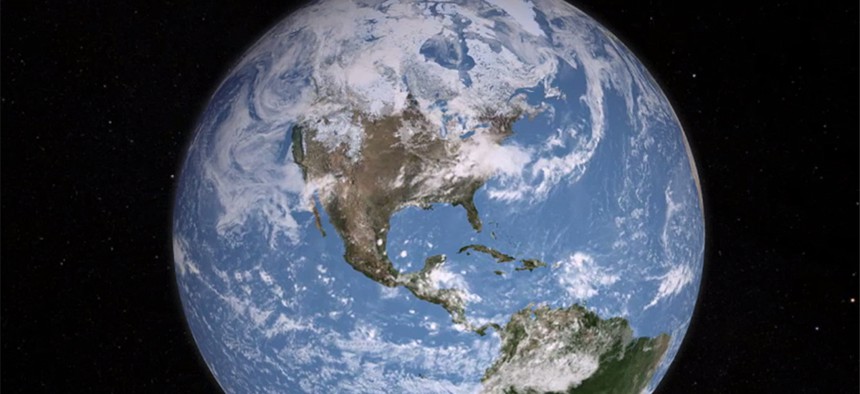Watchdog: Risk of Weather Satellite ‘Data Gap’ Shrinks, But Risks Persist

NASA Goddard Space Flight Center
The potentially forecasting-affecting "data gap" is now estimated at between seven to 10 months.
The risk of a “data gap” from the nation’s crop of polar-orbiting satellites has been reduced from 16 months to between seven to 10 months, according to the Commerce Department inspector general, but the National Oceanic and Atmospheric Administration isn’t out of the woods yet.
In its final audit of the $10 billion Joint Polar Satellite System, the Commerce IG stated the risky period for the U.S. and the fleet of polar-orbiting satellites will begin in November 2016 and will last up to 10 months -- assuming JPSS-1 launches in May 2017 as expected.
For the moment, a demonstration satellite called Suomi NPP – a satellite nearing the end of its life expectancy – continues to beam down data to NOAA ground stations. That data is then used in weather models across the country.
Yet, the audit suggests that even if the new JPSS-1 launches on time and operates correctly, NOAA is still not fully prepared to address a data gap that would occur if Suomi NPP fails in the near future.
Specifically, the IG says NOAA “lacked plans for managing the development and integration of new satellite technology,” and has not developed a contingency plan for “accelerating the assimilation of JPSS-1 data” into its models in the event of a data gap.
Under normal circumstances, NOAA officials would take approximately a year to integrate JPSS-1 data into its models, assessing its performance over a winter and summer season.
NOAA officials stated data from JPSS-1 could be incorporated in as little as three months in the event of a gap, but the audit states NOAA has not completed a “data assimilation contingency plan” that would provide guidance in such a catastrophic scenario.
In the report, NOAA estimates the plan will be finished in the last quarter of 2016.
The timing of the launch itself – and the potential gap in coverage – further exacerbates the potential for problems. NOAA management had better be on top of its game, the audit states, because a new presidential administration and Congress likely won’t be.
“The timeframe of this potential data gap coincides with a transition to a new administration and a new Congress, who will need to understand the status of risk to the continuity of polar satellite sounder observations, including key activities leading to the operational use of JPSS-1 data (i.e., those leading up to and during the potential data gap),” the audit stated.
The audit also critiqued progress made in upgrading NOAA ground stations, which have to be beefed up, as well as NOAA’s “polar follow-on” plans that will establish the cost and schedule of the JPSS program for the next two decades through 2038.
Prolonged issues in either area could increase costs well beyond the $10 billion estimated life cycle for JPSS-1.






